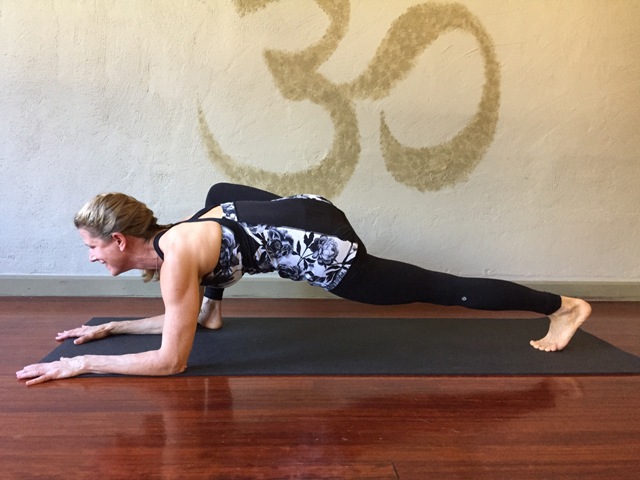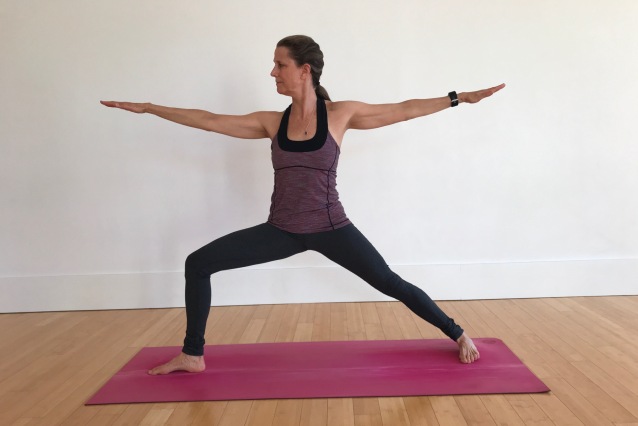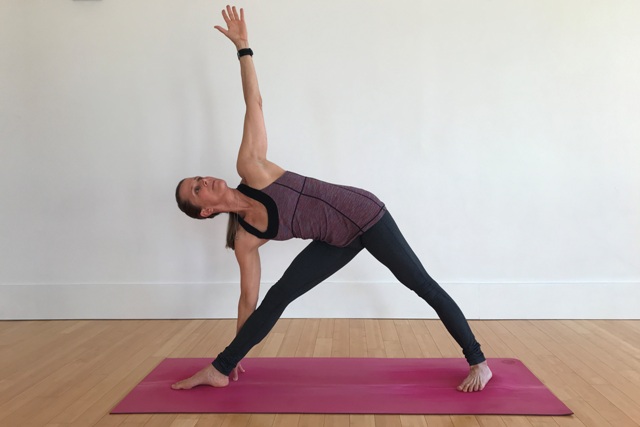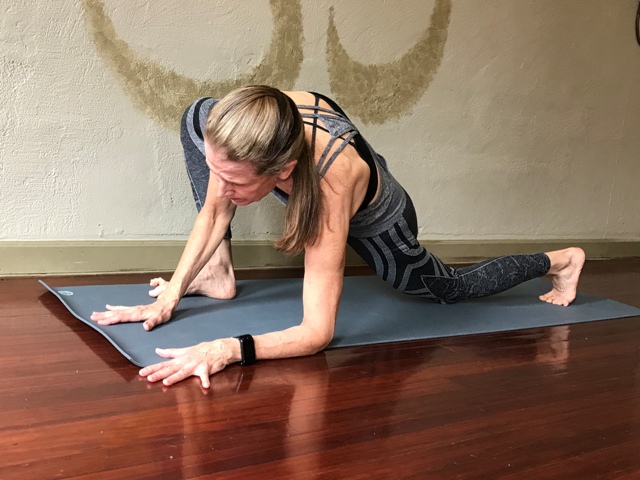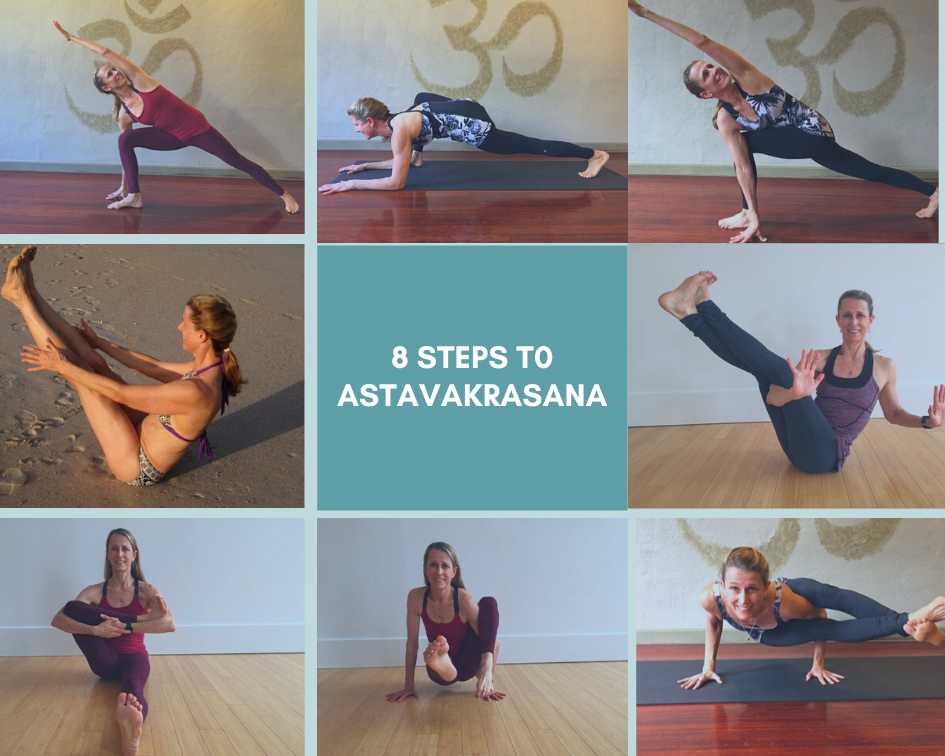Bound Side Angle
Last week I talked about how Lizard Lunge was a prep for Astavakrasana. And it is. I am using this pose as a benchmark pose; meaning that it can tell you where you are and what you have to work on to get to the desired final pose. In Astavakrasana, you need the flexibility of getting one knee up and over your shoulder. You can see how close you are to doing that in Lizard Lunge. Can you get your elbows to the floor? If you can, then your knee is higher than your shoulder. If you can’t, don’t worry and don’t try to force it. Be patient and keep working on your Lizard.
Bound Side Angle is also one of those poses where you need your shoulder to be lower than your knee in order to be able to bind. But that is not the first thing you have to look at. The primary action is your ability to bend your front leg to 90 degrees. Before we look at Bound Side Angle Pose, let’s back up and look at the pieces that make up Bound Side Angle Pose. Those pieces are: Warrior II, Triangle, Side Angle and the hands in prayer behind the back (Pascima Namaskar).
Let’s start in Warrior II. Can you bend your front knee so that the thigh is parallel to the floor? Take an honest look at yourself in a mirror. Is your front thigh parallel to the floor with your shin perpendicular? If you can’t bend that deep (and keep your knee over your ankle), don’t try to force it. Try putting a block, or two, under your front foot and see if that helps you. You may have to play with that for a while, but eventually you can try it without the block.
The second standing pose is Triangle. Eventually we are looking to be able to get the spine horizontal and the bottom hand on the floor. Again, be patient. Your bottom hand may need to rest on your leg or a block. Watch your progress with the help of a mirror. Look at your spine. Keep it straight as you stretch towards the floor; don’t let it dome up in the middle. Also, look to see that your torso is directly above the front leg, not in front of it.
Now it’s time to put Warrior II and Triangle together in Side Angle Pose. Can you bend your front knee so that the thigh is horizontal and get your lower hand to the floor with the upper edge of your body from your back foot to your top hand in one straight line? If you can, you are in full Side Angle Pose and you are ready to bind. If you can’t, keep working on Warrior II and Triangle poses.
There is some separate arm work to do to prepare the shoulders for binding and that is getting your hands behind your back in prayer. Let's start by looking at your ability to clasp your hands behind your back in Yoga Mudra.
This arm position stretches the front of the shoulders and is the same arm position you need for Bridge Pose and Shoulder Stand.
In Yoga Mudra we work the hands behind the back with the arms straight and then we can bend one elbow at a time and work the arms in Cow Face Posture (Gomukhasana).
If you cannot clasp your hands behind your back in Cow Face Posture, use a belt.
Once you can clasp your hands in Gomukhasana then begin working both hands behind your back in Reverse Prayer. If you can do that, you have all the necessary shoulder flexibility to bind in Bound Side Angle Pose.
To come into Bound Side Angle Pose first come into Side Angle Pose but place your bottom hand on the floor inside your front leg. Raise your top arm straight up in the air, and if you need a belt to bind, then the belt should be in this top hand. Bend your top arm back behind your waist as you dip your front shoulder below your front thigh. Slide your bottom forearm under your front thigh and grab hold of your other hand or the belt. Then bring your front buttock under you as you lean your upper body back against your bent leg. This brings your body back into Side Angle position. with your hands now clasped behind your back.
Getting your hands around your front thigh in Bound Side Angle Pose is a very similar action to getting your leg up over your shoulder for Astavakrasana. You can always use a belt for Side Angle Pose until the day you can finally clasp and then you know that Astavakrasana is more attainable. Keep working. I'll see you in class!



